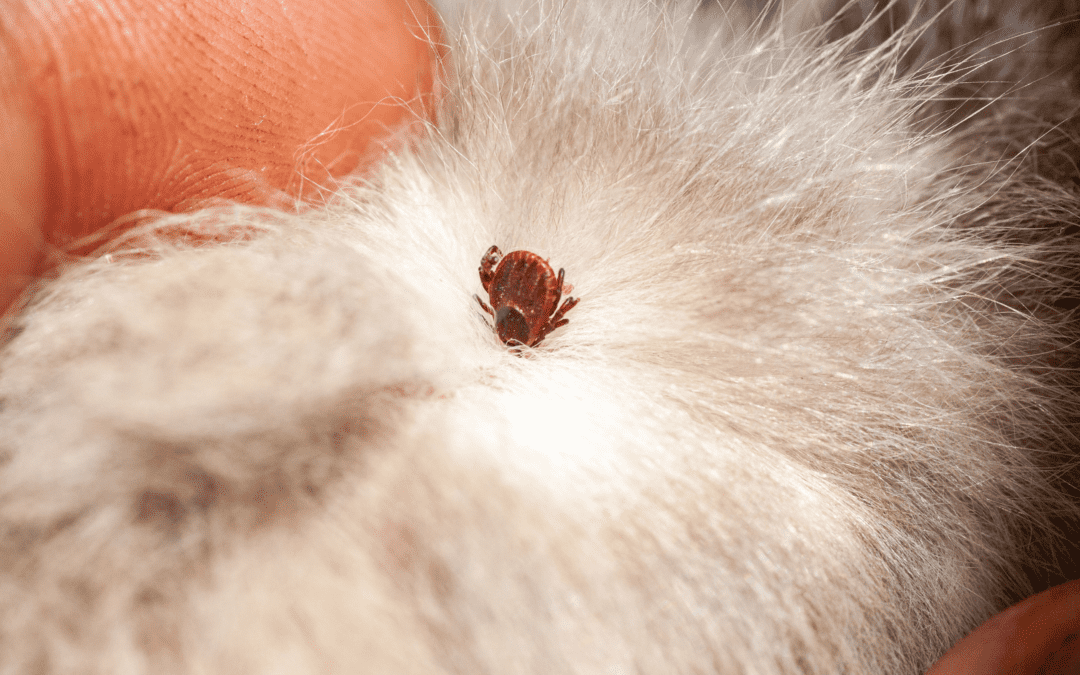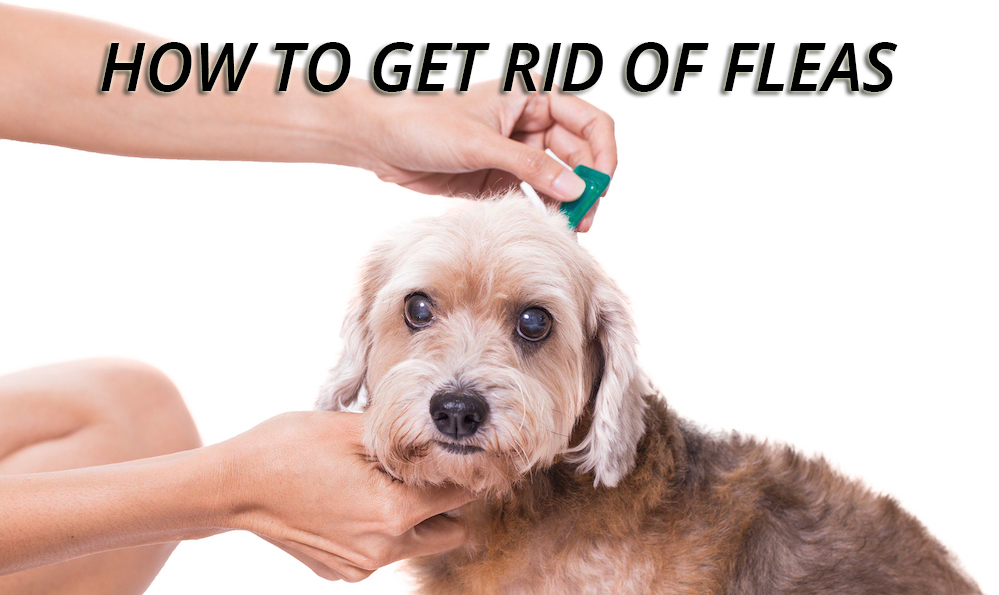READY TO GET STARTED?
REQUEST A FREE ESTIMATE
Fill out the form below or call (888) 466-7849 for a free, no-obligation estimate.

With the arrival of warmer weather, most of us will be spending more time outside with our pets. But while we enjoy being outdoors more, it can expose us and our pets to certain pests, such as fleas and ticks. These parasitic insects carry many diseases, including Lyme disease, anaplasmosis, and ehrlichiosis.
Fleas and ticks can be difficult to keep at bay, often taking weeks to control. There are many ways to protect you and your pets from these pests; continue reading to find out how.
While fleas and ticks are more common in the summer months, this doesn’t mean they are completely gone. Some tend to survive the winter months indoors, causing havoc year-round. To prevent your pets from being exposed throughout the year, check with your veterinarian to see the best treatment methods for them. Always properly administer and check the expiration date on any treatments given to your pets.
If your pet frequents the outdoors, inspecting them before returning indoors will help keep the fleas and ticks away. Ticks like to find warm spots, so checking your pet’s ears, skin, and under armpits are the best places to search. Remove any ticks you might find and reach out to your vet if your pet has been bitten.
Cleaning up your pet’s sleep area at least once a week is a good way to deter or get rid of any pests that have shown up. Get a dog/cat bed that is washable and wipe down their areas frequently. Vacuuming often is also a good way to keep fleas away.
Fleas are known to live in carpets, rugs, and pet bedding. They also avoid high traffic areas, so don’t miss vacuuming near baseboards, under furniture, under cushions, and anywhere your pets sleep or spend significant time.
Fleas prefer warm, moist, shady areas, while ticks like to hide in tall grass. Mowing your lawn regularly and keeping shrubs trimmed back will give them fewer places to hide in your yard.
Attracting wildlife will surely bring more ticks and fleas into your yard. Try not to leave food and water bowls outside overnight. Keep pet food sealed in containers, use trash cans with locking lids, and seal crawlspaces, garages, sheds, and decks.
If you have taken these preventative measures but are still experiencing a tick and flea problem, it might be time to reach out to your local pest control company for further assistance.

Warm, humid summer weather is the perfect breeding environment for fleas. Fleas are parasites that feed on the blood of pets and humans, and although they prefer nonhuman hosts, they will bite people in heavily infested cases. Flea bites are characterized by small, red, itchy spots on the skin that may bleed if scratched or irritated. Sometimes flea bites can go unnoticed if no reaction occurs.
Flea infestations can develop quickly inside your home but often go unnoticed until the problem is severe. Because fleas are most active when they’re hungry, an infestation is more apparent when you’ve been away from your home, like on a summer vacation. And controlling fleas can be challenging since each stage of fleas in their life cycle has to be controlled – eggs, larvae, pupae, and adult fleas. Flea eggs are usually laid in large numbers on a host, such as your dog or cat, and then fall off onto pet beds, upholstered furniture, and carpeted floors. Within a few days or weeks, these eggs develop into flea larvae. Larvae is often hard to find, hiding deep down in carpeted surfaces and furniture, making it a challenge to control the flea infestation. The flea larvae then develops into pupae, and then into adult fleas within a couple of weeks. So if you’re seeing adult fleas (the easiest and most common flea stage to spot) on your pet or in your home, it’s an indication of a bigger issue: a full-blown flea problem.
So, what should you do if you’re seeing fleas? Start with your pets. They should be bathed and treated with flea medication to kill any adult fleas that may be on them. Then you’ll want to thoroughly clean your home – dust and sweep hard surfaces, vacuum carpet and upholstered furniture – paying close attention to the areas frequented by your pet. Be sure to wash pet beds, blankets, and toys in a hot water cycle too. Throw out anything that’s not machine-washable.
Once you’ve cleaned your home, it’s time for flea treatments. We recommend using liquid pest products specially formulated to control fleas throughout the house, again focusing more on the areas your pet plays, sits, walks, and sleeps on. You’ll want to remove pets from your home before doing this and allow the products to completely dry before they return. Insect growth regulators (IGR) are popular treatment options for fleas since they are made to prevent flea larvae from developing into the pupae stage. If your pets spend a lot of time in any particular area outside of your home, you’ll want to consider treating these spots for fleas with a flea insecticide for yards.
You’ll need to repeat this process of cleaning and flea treatments (according to the products’ directions) until the flea infestation is eradicated.
Our best tip for getting rid of fleas: prevent a flea infestation before one starts. Keep your pets on routine flea medication and bathed regularly. Also consider a preventative home pest control program from a professional exterminator. These programs usually consist of interior and/or exterior treatments done quarterly for common household pests. And if you still end up with a flea problem, your pest control provider can give you effective flea control recommendations that work fast, usually as a low-cost, add-on service.

Warm, humid summer weather is the perfect breeding environment for fleas. Fleas are parasites that feed on the blood of pets and humans, and although they prefer nonhuman hosts, they will bite people in heavily infested cases. Flea bites are characterized by small, red, itchy spots on the skin that may bleed if scratched or irritated. Sometimes flea bites can go unnoticed if no reaction occurs.
Flea infestations can develop quickly inside your home but often go unnoticed until the problem is severe. Because fleas are most active when they’re hungry, an infestation is more apparent when you’ve been away from your home, like on a summer vacation. And controlling fleas can be challenging since each stage of fleas in their life cycle has to be controlled – eggs, larvae, pupae, and adult fleas. Flea eggs are usually laid in large numbers on a host, such as your dog or cat, and then fall off onto pet beds, upholstered furniture, and carpeted floors. Within a few days or weeks, these eggs develop into flea larvae. Larvae is often hard to find, hiding deep down in carpeted surfaces and furniture, making it a challenge to control the flea infestation. The flea larvae then develops into pupae, and then into adult fleas within a couple of weeks. So if you’re seeing adult fleas (the easiest and most common flea stage to spot) on your pet or in your home, it’s an indication of a bigger issue: a full-blown flea problem.
So, what should you do if you’re seeing fleas? Start with your pets. They should be bathed and treated with flea medication to kill any adult fleas that may be on them. Then you’ll want to thoroughly clean your home – dust and sweep hard surfaces, vacuum carpet and upholstered furniture – paying close attention to the areas frequented by your pet. Be sure to wash pet beds, blankets, and toys in a hot water cycle too. Throw out anything that’s not machine-washable.
Once you’ve cleaned your home, it’s time for flea treatments. We recommend using liquid pest products specially formulated to control fleas throughout the house, again focusing more on the areas your pet plays, sits, walks, and sleeps on. You’ll want to remove pets from your home before doing this and allow the products to completely dry before they return. Insect growth regulators (IGR) are popular treatment options for fleas since they are made to prevent flea larvae from developing into the pupae stage. If your pets spend a lot of time in any particular area outside of your home, you’ll want to consider treating these spots for fleas with a flea insecticide for yards.
You’ll need to repeat this process of cleaning and flea treatments (according to the products’ directions) until the flea infestation is eradicated.
Our best tip for getting rid of fleas: prevent a flea infestation before one starts. Keep your pets on routine flea medication and bathed regularly. Also consider a preventative home pest control program from a professional exterminator. These programs usually consist of interior and/or exterior treatments done quarterly for common household pests. And if you still end up with a flea problem, your pest control provider can give you effective flea control recommendations that work fast, usually as a low-cost, add-on service.